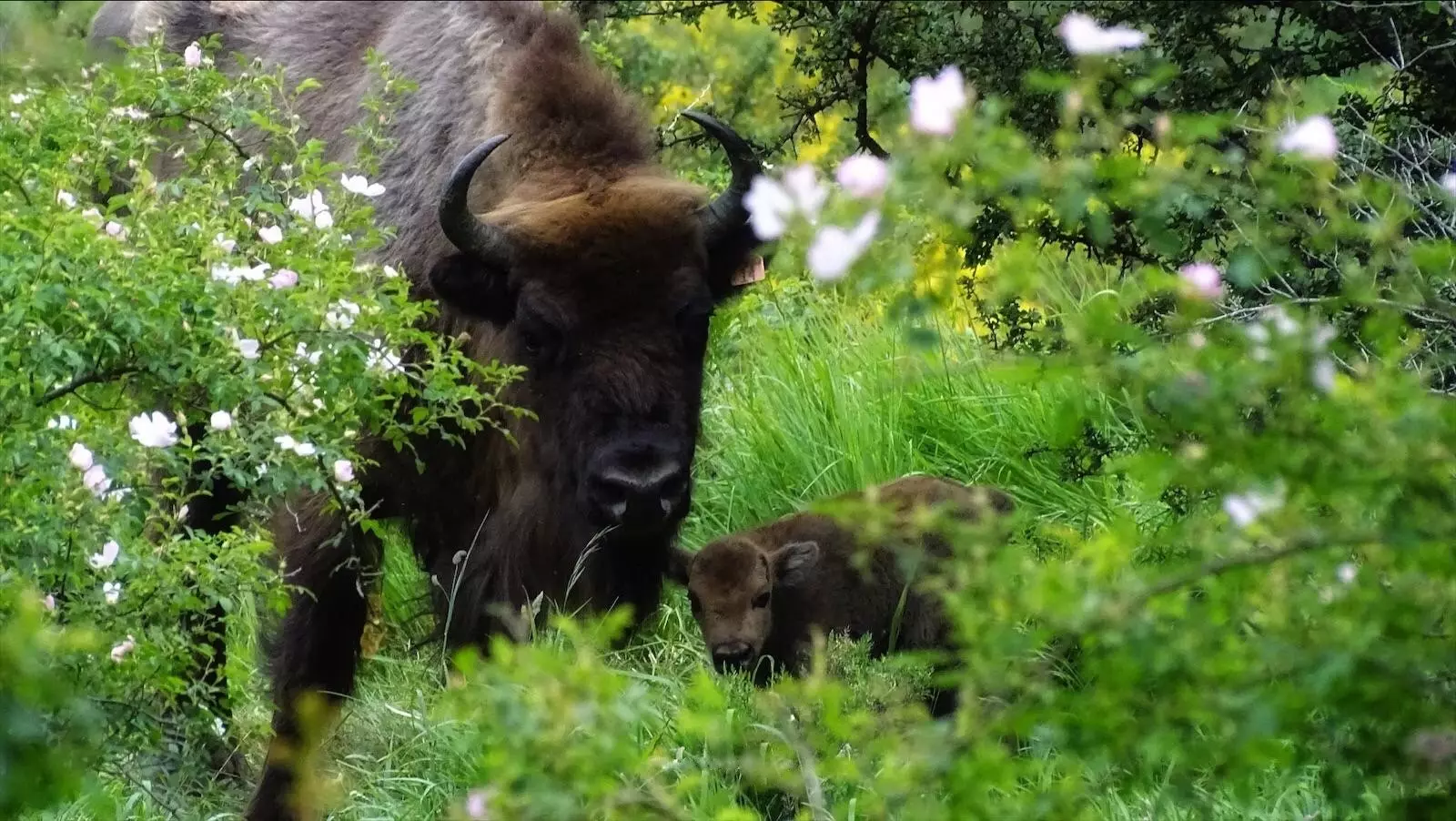
Mura and his calf in the Fundación Valle del Bisonte reserve, in Riaño (León).
The one from Riaño (Leon) It is not the first European bison calf born in Spain in more than 10,000 years. Just to name a few examples, Cipria was born in 2010 in San Cebrián de Mudá (Palencia) and Astur arrived four years later in the meadow of the Teverga Prehistory Park (Asturias). The notoriety of this birth lies in the fact that It is the first time that this has happened in conditions of semi-freedom in our country, as confirmed by Pelayo García, one of the six patrons of the Fundación Valle del Bisonte.
“What differentiates us from the Wild Fauna Museum in Valdehuesa (León), from Bison Bonasus, from the Cabárceno Nature Park and from other places are the conditions of semi-freedom in which the herd lives. It is a huge wooded enclosure, about 500 hectares, located in the Anciles valley, in the heart of the Cantabrian coast, partially closed, but permeable to the rest of the fauna in the area: deer, chamois, mountain goats, wolves…”, explains this technical forest engineer.
Exactly for this reason sightings in this Riaño reserve are not guaranteed. In fact, on the same day as this interview, Pelayo had gone to check the status of the mother and her calf (a female), as well as to obtain new graphic material for the media, and it was impossible for him to locate them.
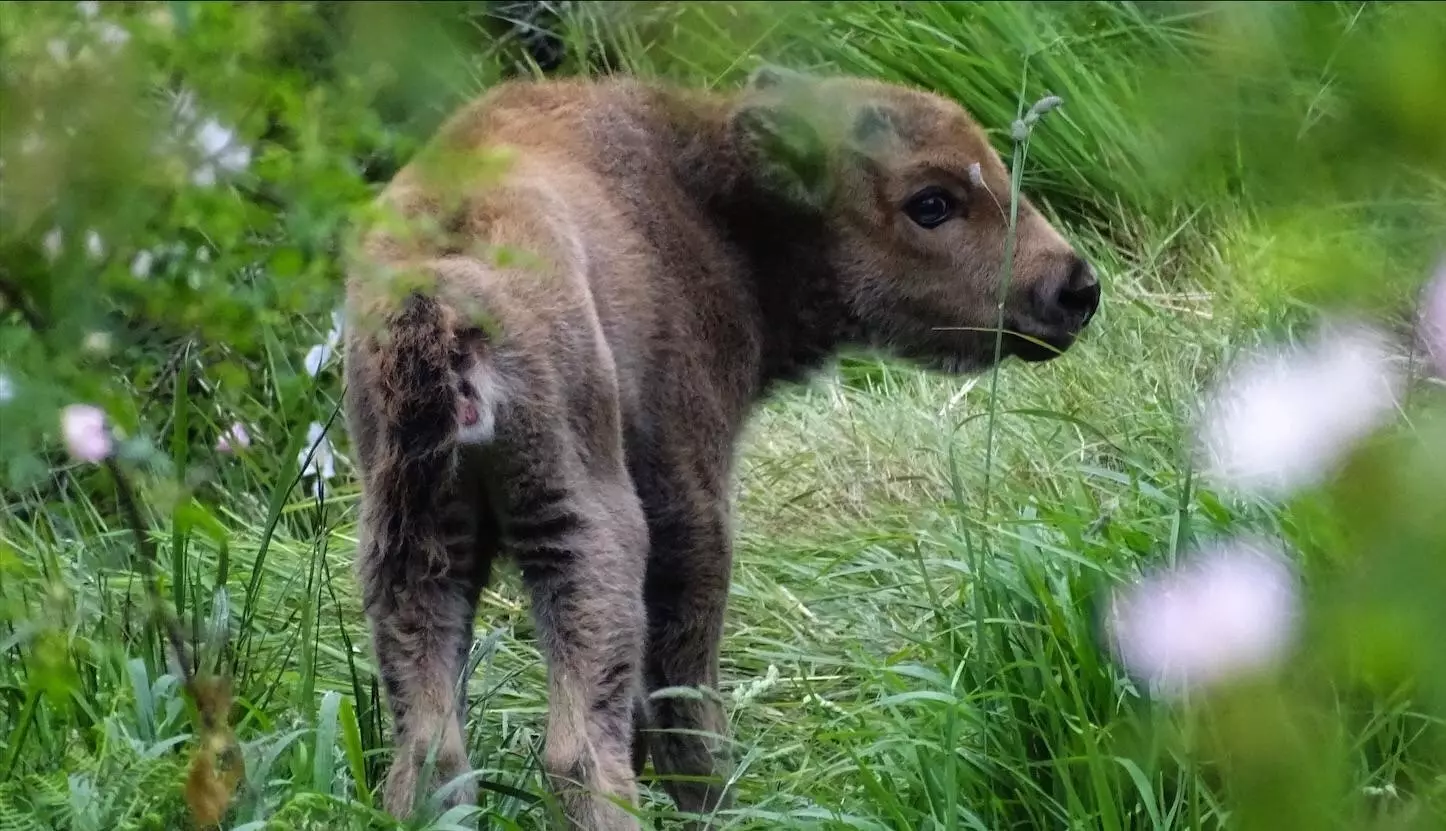
The little calf in the Anciles valley, Riaño (León).
THE PROJECT
This project has nothing to do with a zoo, explains Pelayo, since in Riaño the bison have to fend for themselves to feed themselves, as well as to protect themselves from the inclement weather of the Leonese mountains, and that includes significant snowfalls.
An adaptation that seems to be confirmed with the birth of this Leonese bison calf that has not yet been named (They are considering the possibility that the students of the school in the area are the ones who put it on). Yes, his mother, Mura (like the peak of the Riaño Mountains), and his father, Aragorn, have two of them. the only three specimens that the Valle del Bisonte Foundation had until this birth. Tendeña (named after a nearby valley), is the third, a pregnant female who is about to give them new joy.
"Before Covid, we had prepared a transport of more animals to expand the herd, but everything came to a standstill because we are in a regional park, in a livestock area, but before the end of the year we plan to reinforce the herd. Especially so that there are no consanguinity problems. It's about expanding the genetic variability of the species, we have to integrate specimens and make the greatest possible mixtures", comments Pelayo, who reminds us that the very high consanguinity that exists in Europe is due to the fact that the scarce 6,000 European Lowland-Caucasian and Lowland bison existing They descend from 12 unique specimens.
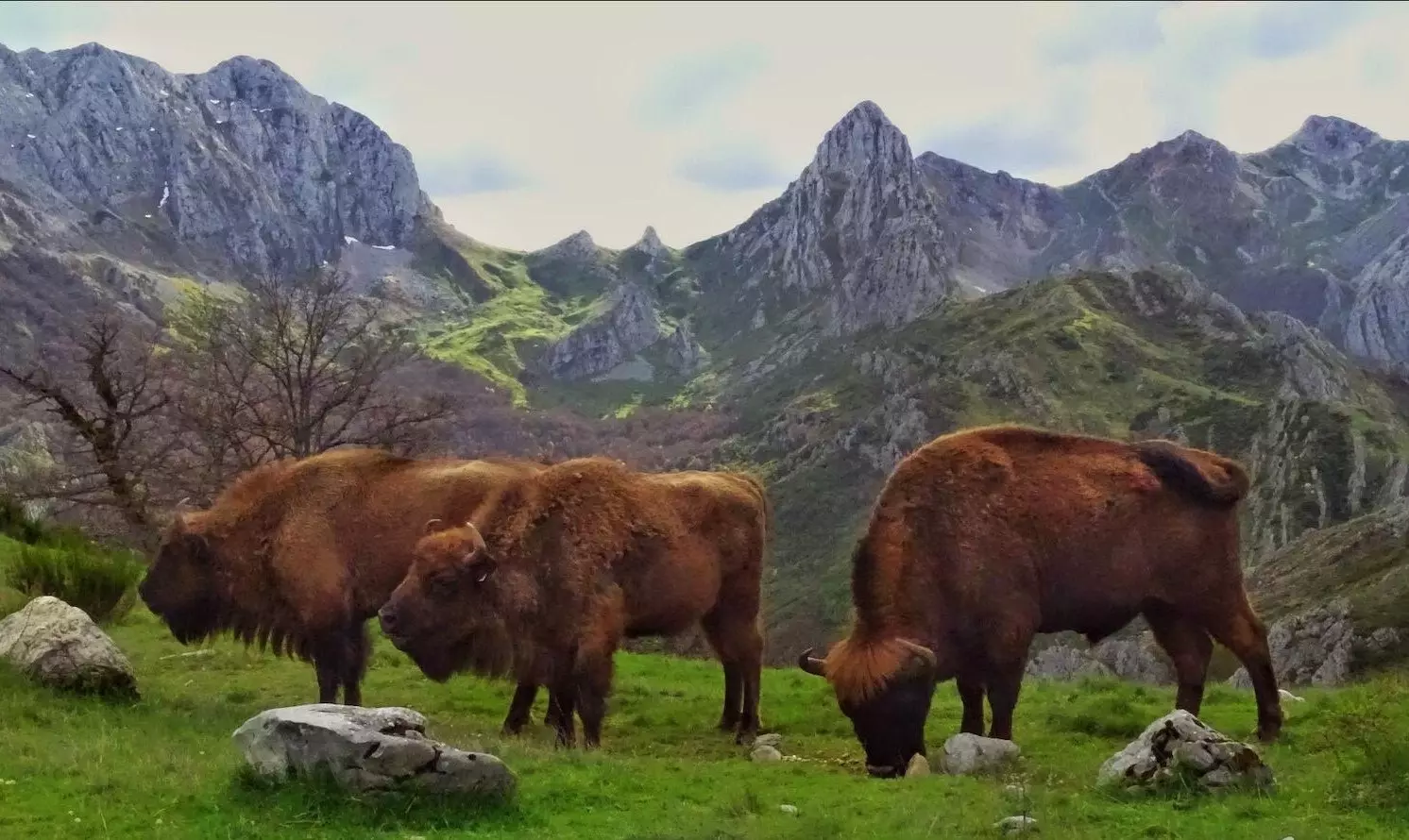
Mura, Aragorn and Tendeña, in the Anciles valley.
THE OBJECTIVES
Because the bison, until not long ago, was on the brink of extinction around the world, among other factors, due to hunting and the destruction by man of their natural habitats. Reason why this kind of projects, which contribute to the conservation and breeding of specimens to try to prevent their disappearance, they are so important.
In addition, in the specific case of this Leonese reserve, as Pelayo explains: "human intervention does not go beyond management for veterinary reasons and therefore we can study them in their natural environment.”
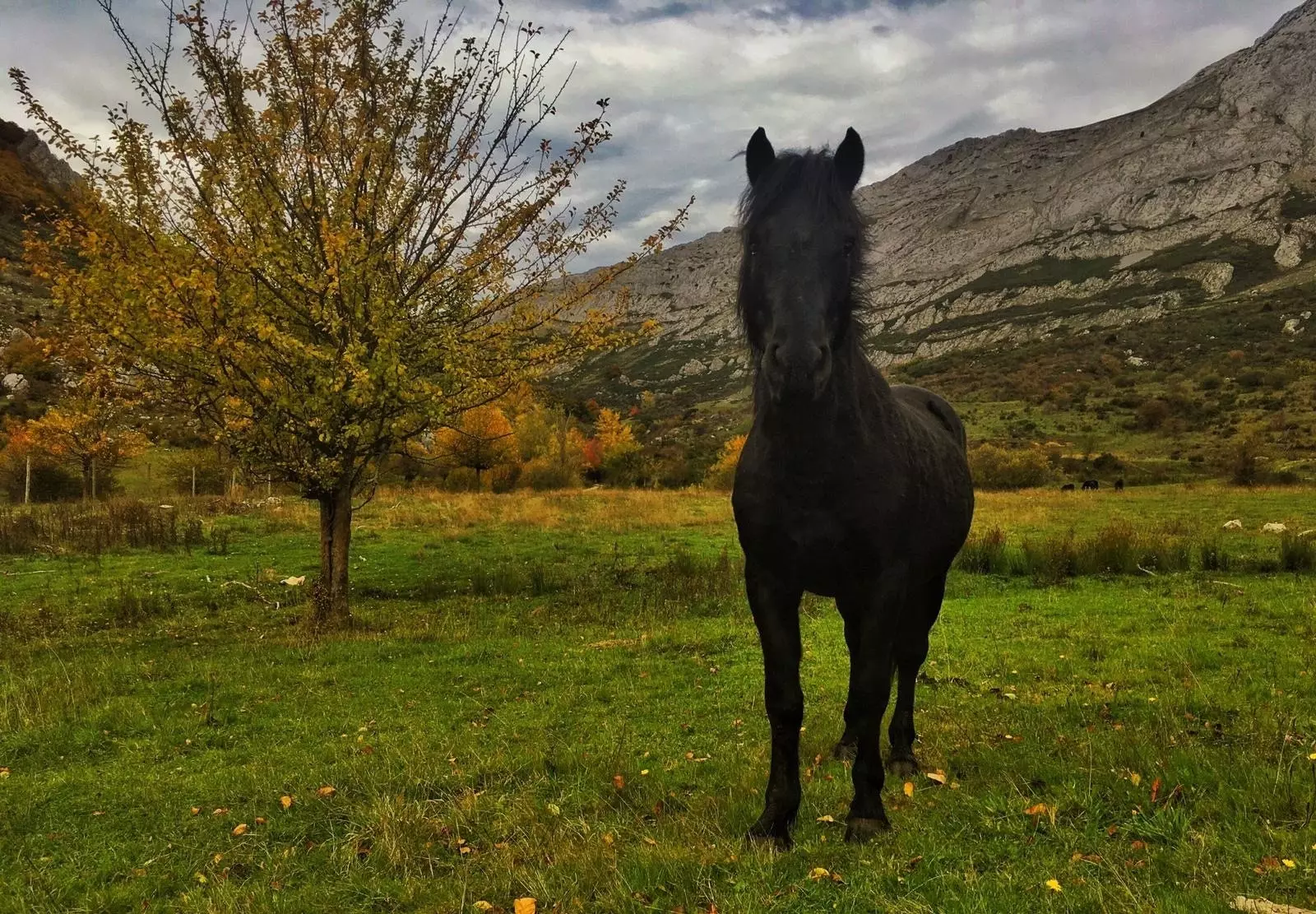
One of the pottoka horses of the Valle del Bisonte Foundation.
Since another of the objectives of the Valle del Bisonte Foundation is for students or researchers to come to carry out their final degree projects. “They have already come from Holland and Denmark, and they do not have to be studies on the bison, they can also deal with the impact of herbivores, livestock or local fauna, everything related to this environment”, continues the patron of the foundation.
Also there is the possibility of going on a safari on foot or in a 4x4 through the nature reserve (experience that serves both to finance the project and for the tourist activity to revert to the benefit of the region). A route in which, if we are lucky, we can run into the herd, but also with the pottokas horses -native, free and descendants of the Iberian horses of the Cantabrian mountain range- with which the bison share an environment, "a very mixed forest, of beech, oak and many wild fruit trees", concludes Pelayo García.
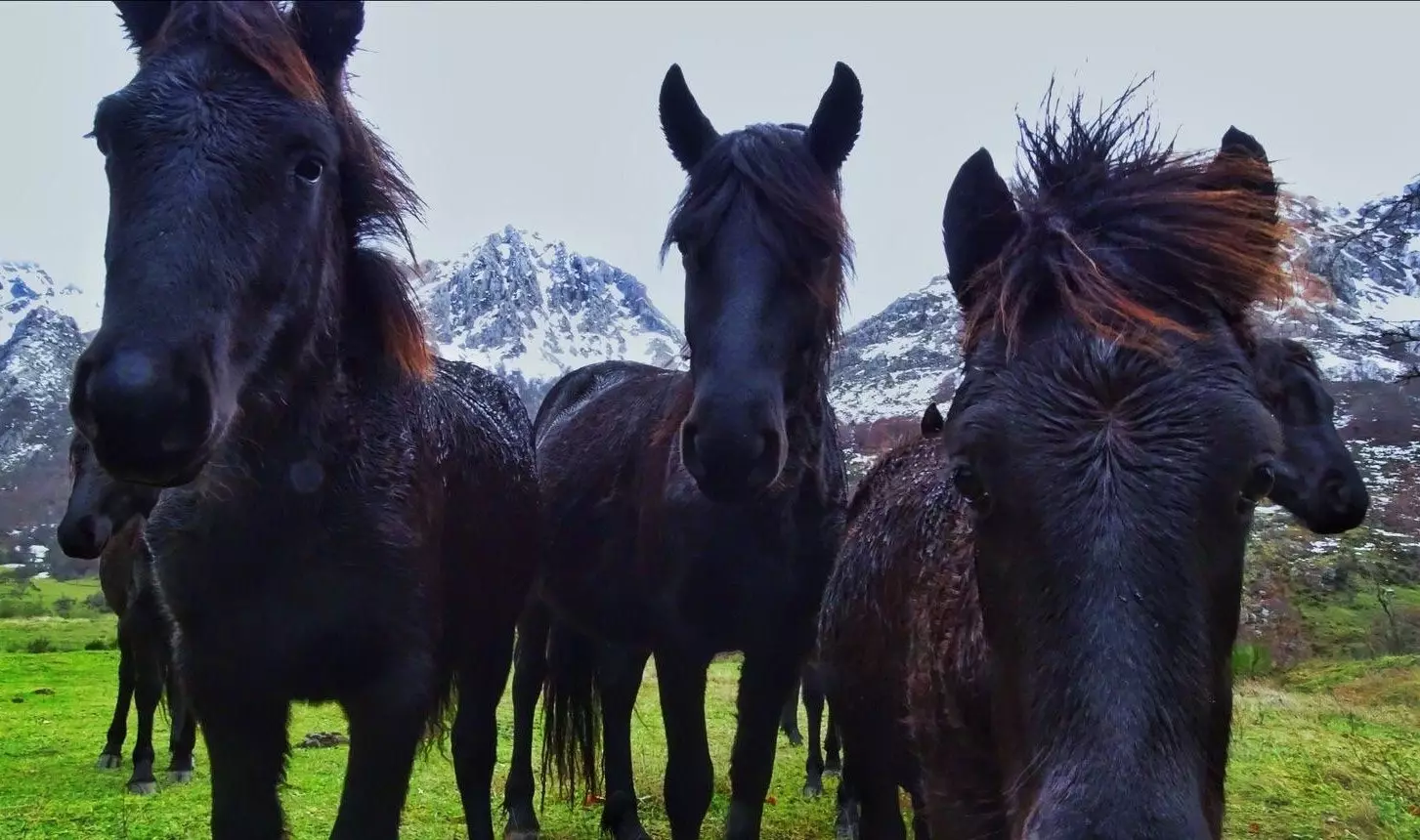
The pottokas are descendants of the Iberian horses of the Cantabrian mountain range.
